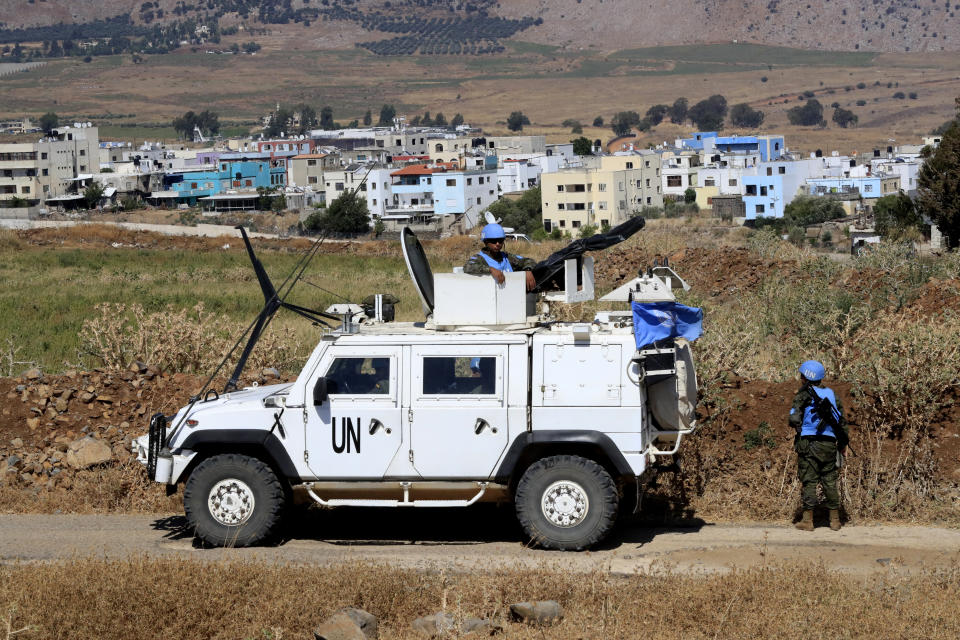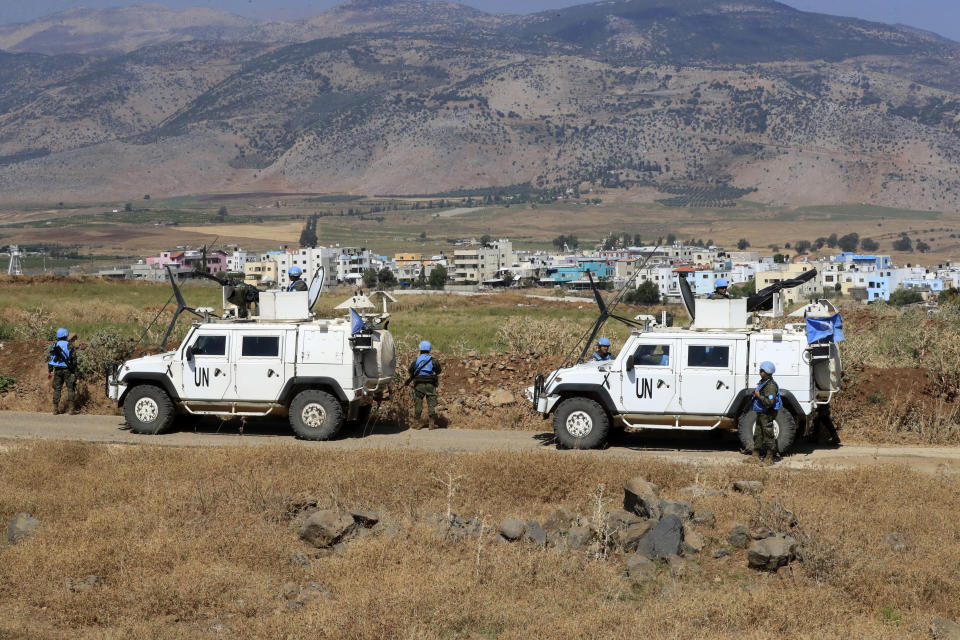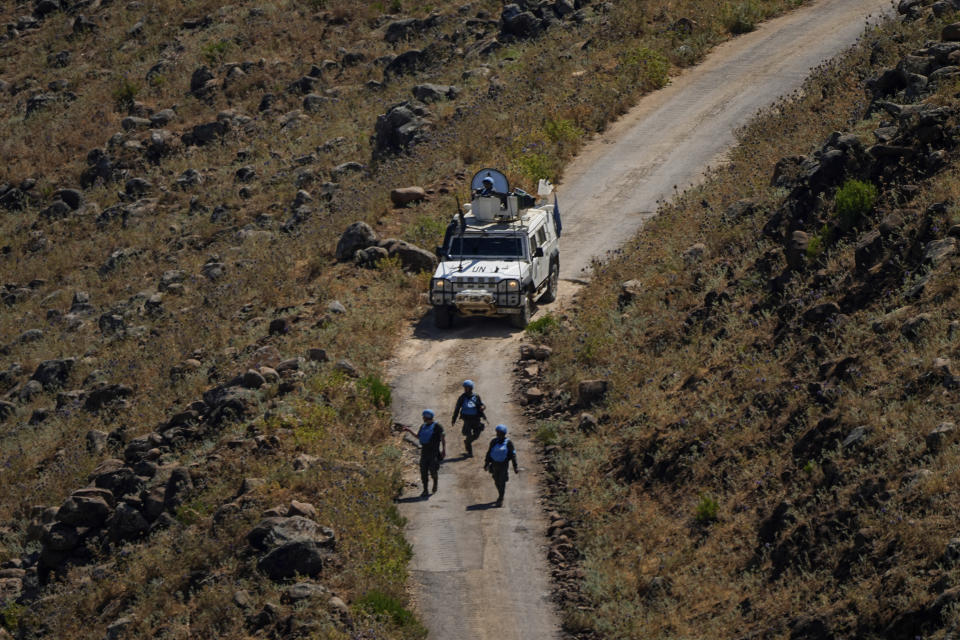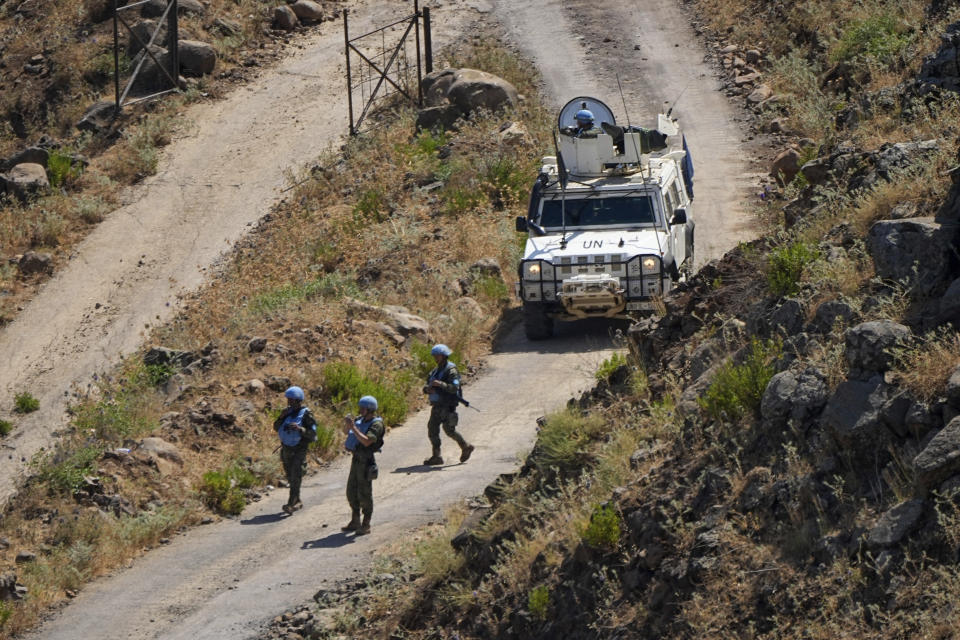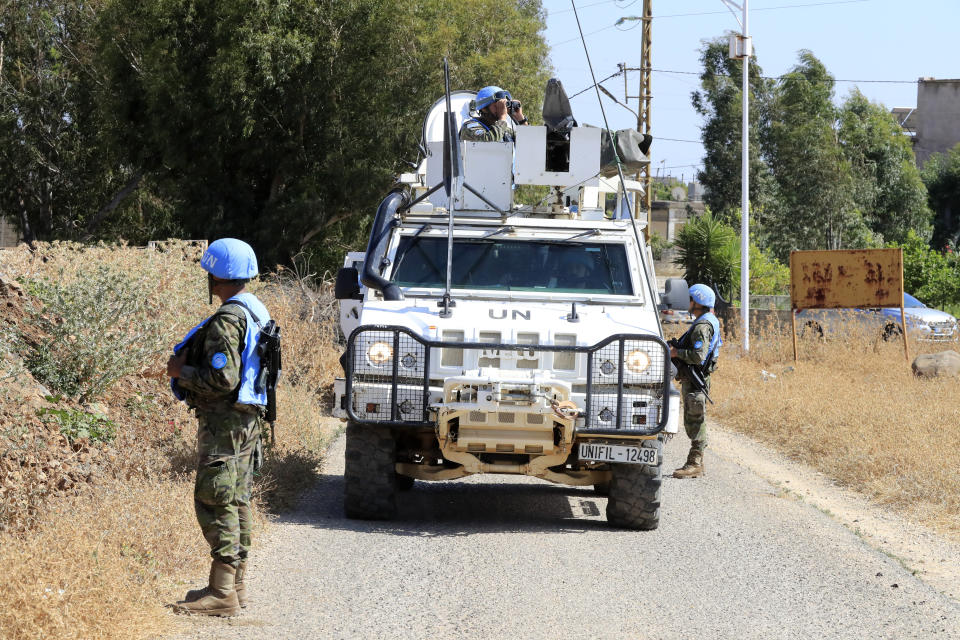Israeli forces shell southern Lebanon border village after rocket lands near disputed territory
BEIRUT (AP) — Israeli forces shelled a southern Lebanese border village on Thursday after several explosions were heard in a disputed area where the borders of Syria, Lebanon and Israel meet.
Tensions continue to flare in the border area over two tents erected by the militant group Hezbollah and Israel’s building of a wall around the Lebanese part of a village that Israeli troops captured during the 2006 Israel-Hezbollah war.
A Lebanese military official who spoke on the condition of anonymity because of not being cleared to provide information to journalists said one rocket was fired toward Israel from the border town of Kfar Chouba and that Israeli forces responded with two rocket attacks.
The Israeli military confirmed that it had shelled Kfar Chouba. It said later Thursday that it had identified the incoming projectile as an anti-tank missile fired near the town of Ghajar — with some fragments landing in Lebanon and others inside Israeli territory.
It was unclear who fired the rocket from Lebanon. The Lebanese army did not immediately comment on the explosions.
The U.N. peacekeeping mission in southern Lebanon, known as UNIFIL, said it could not verify that rocket fire caused the explosion but that the sounds were “consistent with a possible launch.” UNIFIL sent peacekeepers to investigate what happened while the head of the mission speaks to both Lebanese and Israeli authorities to ease the situation.
“This incident comes at a sensitive time and in an area that has already experienced tensions earlier this week,” UNIFIL said in a statement. “We urge everyone to exercise restraint and avoid any action that could cause further escalation.”
Minutes after the explosions, Iran-backed Hezbollah issued a statement about Israel’s wall in the village of Ghajar. The village is split into Lebanese and Israeli sides along a border known as the blue line that was demarcated after Israel’s withdrawal from southern Lebanon in 2000.
“It is not just a routine breach of what the occupation forces are accustomed to from time to time,” the statement said. It did comment on the explosions.
As part of the U.N. Security Council resolution that ended the 2006 war between Israel and Hezbollah, Israel is to withdraw from the northern part of Ghajar, which has not happened. U.N. peacekeeping forces in Lebanon have called on Israel for years to end its building work in northern Ghajar and to withdraw its troops.
Lebanese soldiers in Mays al-Jabal, another border town, obstructed an Israeli bulldozer accompanied by Israeli soldiers on Wednesday that reached over the technical fence to remove plants and trees from the Lebanese side. The tense standoff did not result in any clashes.
The situation also has been heated along Chebaa Farms and around Kfar Chouba. Israel captured those areas from Syria during the 1967 Mideast war, and they are part of Syria’s Golan Heights that Israel annexed in 1981. The Lebanese government says the area belongs to Lebanon.
In early June, Israel filed a complaint with the U.N. saying that Hezbollah had set up tents several dozen meters (yards) inside the disputed territory. Israeli media have since reported that Hezbollah removed one of the two tents, but the group did not confirm the action.
Later that month, Israeli soldiers fired tear gas to disperse scores of Lebanese protesters who pelted the troops with stones along the border near the disputed territory.
Hezbollah also shot down an Israeli drone last month. The group in the past has claimed responsibility for downing Israeli drones, and Israel’s military has said its forces have shot down Hezbollah drones.
Israel considers Hezbollah its most serious immediate threat, estimating it has some 150,000 rockets and missiles aimed at Israel.
